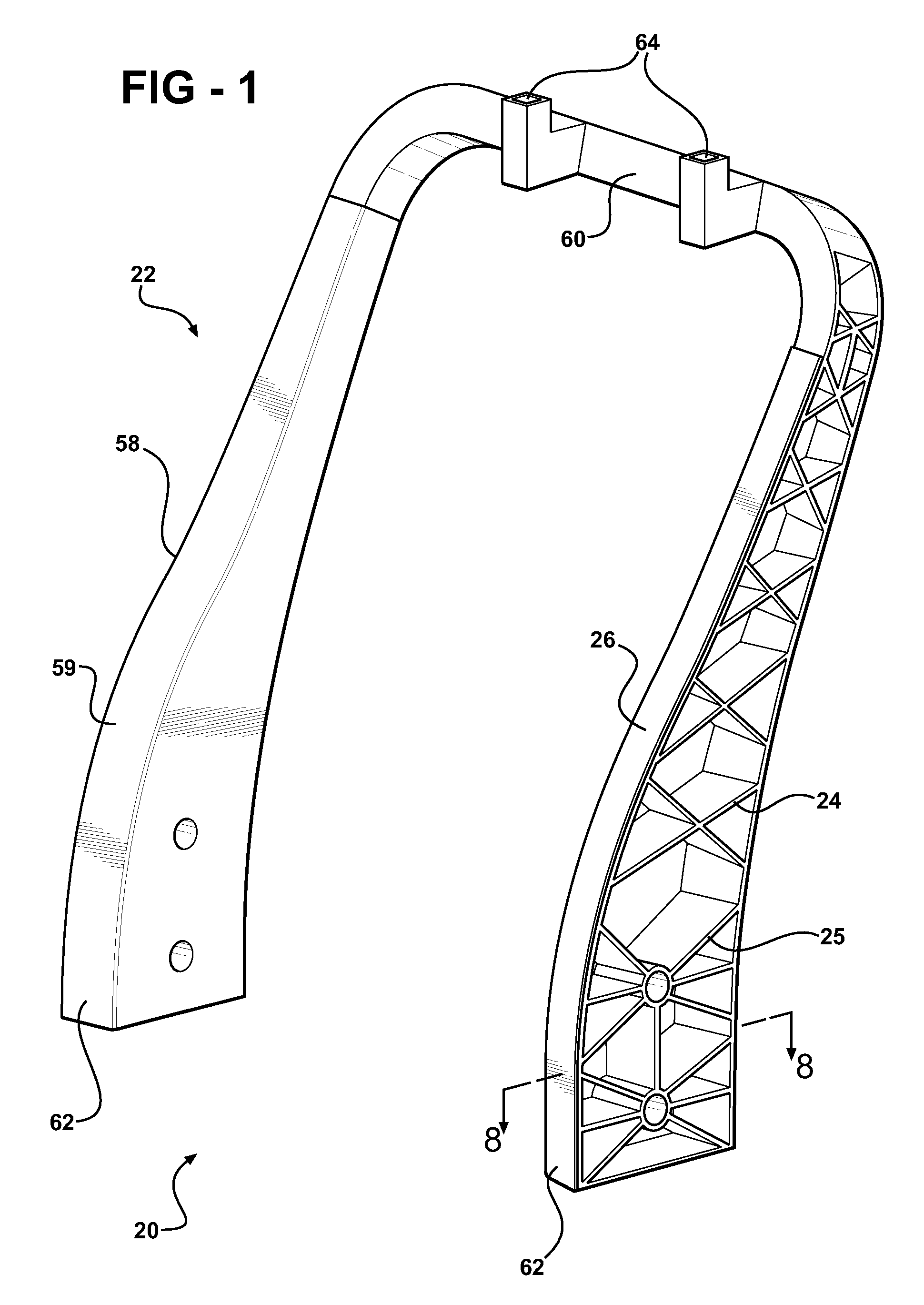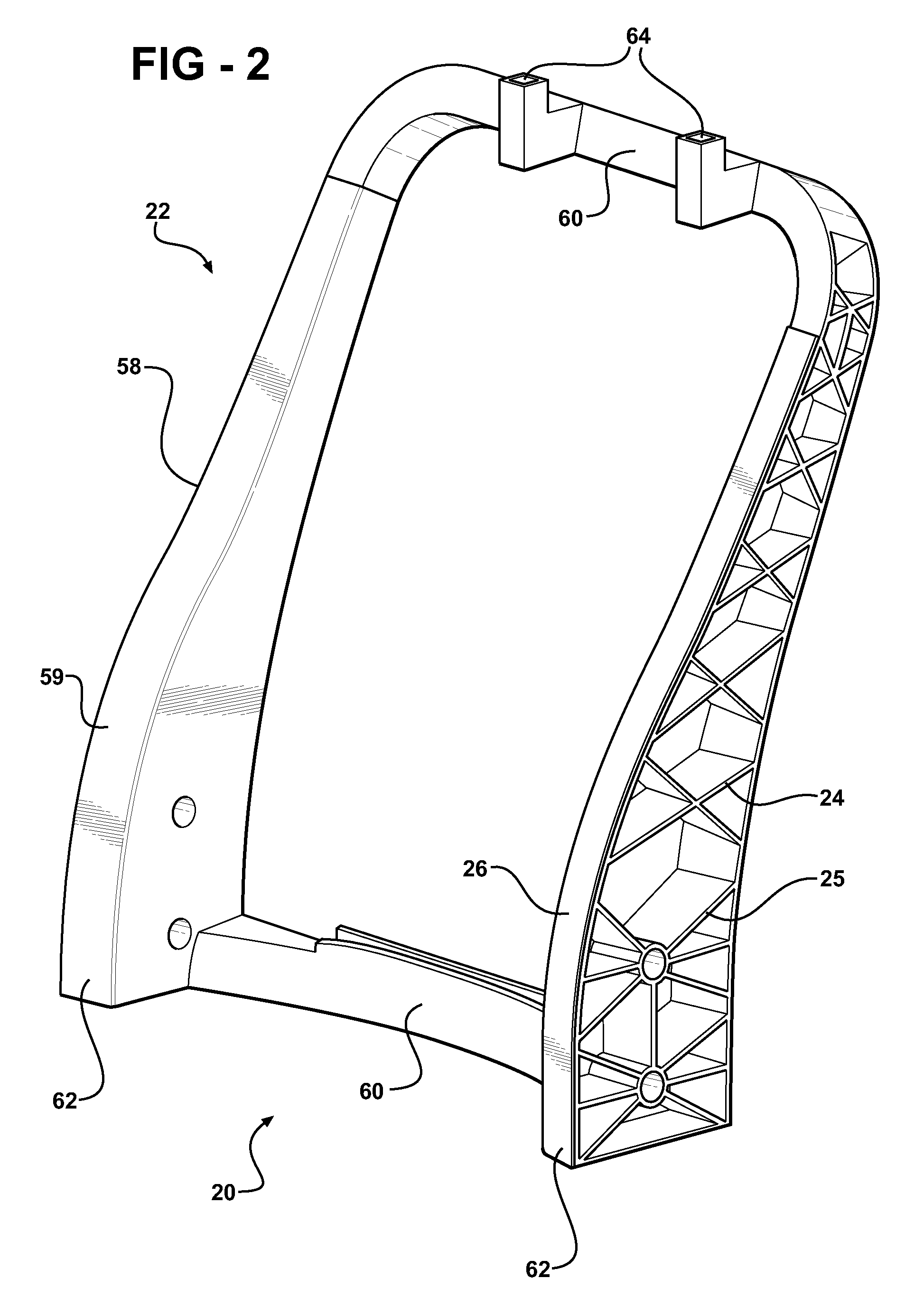Composite component
a composite component and component technology, applied in the field of composite components, can solve the problems of high cost of assembly of these components, limited use of plastic in such applications, and relatively heavy steel materials, and achieve the effects of easy integration, easy recycling, and reduced weight of composite components
- Summary
- Abstract
- Description
- Claims
- Application Information
AI Technical Summary
Benefits of technology
Problems solved by technology
Method used
Image
Examples
Embodiment Construction
[0029]Referring to the Figures, wherein like numerals indicate corresponding parts throughout the several views, a composite component, is shown generally at 20. It should be appreciated that the composite component 20 may be any type of composite component 20 for a variety of uses. For example, the composite component 20 may be a seat back 22 or a structural beam (not shown). In the embodiments shown in the Figures, the composite component 20 is the seat back 22 for a vehicle, such as an automobile. The seat back 22 is assembled in a seat assembly (not shown) including a seat bottom extending generally horizontally for supporting a seated passenger or cargo. It should be appreciated that the seat back 22 may be used in any type of vehicle including, for example, a bus, an airplane, and a boat. Although not required, the seat back 22 typically includes foam surrounding the support portion 24 and the reinforcing composite layer 26 and a covering over the foam.
[0030]As shown in FIGS. ...
PUM
| Property | Measurement | Unit |
|---|---|---|
| thick | aaaaa | aaaaa |
| melting temperature | aaaaa | aaaaa |
| melting temperature | aaaaa | aaaaa |
Abstract
Description
Claims
Application Information
 Login to View More
Login to View More - R&D
- Intellectual Property
- Life Sciences
- Materials
- Tech Scout
- Unparalleled Data Quality
- Higher Quality Content
- 60% Fewer Hallucinations
Browse by: Latest US Patents, China's latest patents, Technical Efficacy Thesaurus, Application Domain, Technology Topic, Popular Technical Reports.
© 2025 PatSnap. All rights reserved.Legal|Privacy policy|Modern Slavery Act Transparency Statement|Sitemap|About US| Contact US: help@patsnap.com



